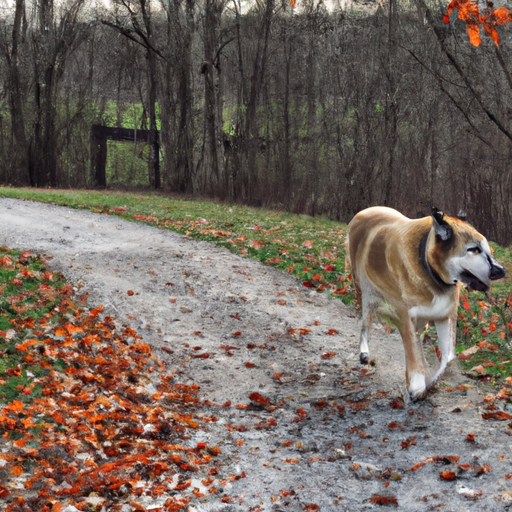Walking your dog is a fundamental aspect of pet care. However, as your furry friend ages, the way you approach your daily walks has to evolve as well. As a caregiver, it’s crucial to understand the impact of aging on your dog’s walking activities. This guide will help you navigate this important aspect of your dog’s life.
Understanding the Importance of Walking Your Dog
Walking your dog isn’t just about giving them a chance to relieve themselves. It’s also an essential form of exercise that helps maintain their physical health. Regular walks can help prevent obesity, improve cardiovascular health, and keep your dog’s joints flexible. Additionally, walks are an important opportunity for dogs to explore their environment, which keeps their minds sharp.
How Your Dog’s Walking Needs Change With Age
As dogs age, their bodies undergo significant changes. These changes can affect their stamina, flexibility, and overall physical ability. Here are some key factors to consider:
-
Decreased Energy Levels: Older dogs often have less energy than their younger counterparts. This may mean shorter, slower walks.
-
Joint and Muscle Health: Aging can affect your dog’s joints and muscles, possibly leading to arthritis or other health conditions. These conditions may require gentle, low-impact exercise.
-
Weight Management: Older dogs have slower metabolisms, which can lead to weight gain. Regular walks become even more important for maintaining a healthy weight.
How to Adjust Your Walking Routine for an Aging Dog
Adjusting your walking routine for an older dog is all about paying attention to their needs and being flexible. Here are some strategies:
- Start with shorter, more frequent walks.
- Avoid strenuous activities, like climbing steep hills or running.
- Consider softer surfaces, like grass or dirt, which can be easier on your dog’s joints.
- Keep an eye on your dog’s body language. If they seem tired or in pain, it’s time to head home.
The Role of Nutrition in Your Dog’s Walks
Good nutrition is essential for keeping your dog healthy and active throughout their life. As your dog ages, their nutritional needs can change. They may need fewer calories, or they may require more protein to maintain their muscle mass. You might also want to consider supplements to support joint health.
| Age Group | Caloric Needs | Protein Needs | Supplements |
|---|---|---|---|
| Young | High | High | Optional |
| Adult | Moderate | Moderate | Optional |
| Senior | Low | High | Recommended |
The Importance of Regular Vet Checkups
Regular vet checkups are crucial for monitoring your dog’s health as they age. Your vet can provide guidance on adjusting your walks and diet to suit your dog’s changing needs. They can also catch and treat any potential health issues early, which can greatly improve your dog’s quality of life.
Mental Stimulation During Walks
Walks aren’t just physical exercise; they’re also a great opportunity for mental stimulation. Let your dog sniff around and explore their surroundings. This can help keep their mind sharp and engaged. You can also introduce gentle games or training exercises to their walks to add an extra layer of mental stimulation.
How to Know When to Stop Walking Your Dog
There may come a point when walks become too physically demanding for your dog. This can be a tough realization, but it’s important to prioritize your dog’s comfort and well-being above all else. Signs that your dog may need to stop walking include persistent fatigue, difficulty standing or walking, and loss of interest in walks. If you notice these signs, consult your vet immediately.
FAQ
Q1: How often should I walk my older dog?
A1: The frequency of walks can vary depending on your dog’s health and energy levels. Some older dogs may still enjoy two short walks a day, while others may only be able to handle a short walk every other day.
Q2: How can I tell if my dog is getting enough exercise?
A2: Signs that your dog is getting enough exercise include maintaining a healthy weight, having a good appetite, and showing an overall happy and relaxed demeanor. If your dog is restless, gaining weight, or seems bored, they may need more exercise.
Q3: Are there alternatives to walking for my senior dog?
A3: Yes, swimming is a great low-impact exercise for senior dogs. There are also various indoor exercises and games that can help keep your dog active and engaged.
Q4: Can a change in diet help with my dog’s energy levels?
A4: Absolutely. A balanced diet can significantly influence your dog’s energy levels. Consult your vet for nutritional advice tailored to your dog’s needs.
Understanding and adapting to your dog’s changing walking needs as they age can ensure they remain healthy and happy. Always remember, their health and comfort should be your primary concern.



